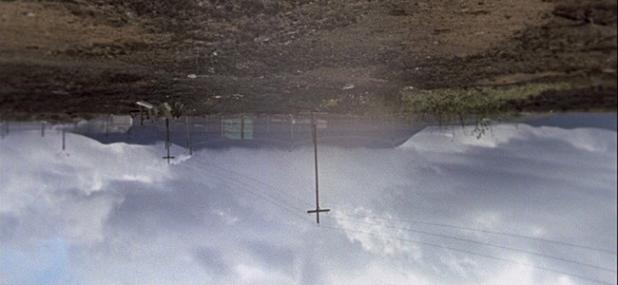Undiscovered Landscapes (The Wapping Project) Exhibition
Exhibition, New in Ceasefire - Posted on Thursday, December 8, 2011 4:30 - 0 Comments
By Janine DeFeo
(Photo: Still from Travelling Fields – Inger Lise Hansen)
The films included in ‘Undiscovered Landscapes’, currently at The Wapping Project, are shown in the basement of what was once the Wapping Hydraulic Power Station – a dark, cavernous space, marked all around (once your eyes adjust) by traces of the building’s former industrial functionality. This, a location with its own weight of history, proves to be a suitable place to screen works that (in the words of the Wapping Project’s press release) ‘explore the landscape of the family, self, home and place’ by five international filmmakers.
The show is structured as a sort of film season, with each piece playing on a continuous loop for roughly a week. The artists included are Marta Michalowska, Elina Brotherus, Emily Richardson, Suki Chan and Inger Lise Hansen.
The chosen format makes connections and discontinuities between the works included in the show harder to discern, but relaxes the usual compulsion to ‘see everything’; instead encouraging a focus on the individual works and a more relaxed search for common currents. And there is, of course, a logic to the selection of the works. These are not landscapes competently known and portrayed – they remain ‘undiscovered’ to the artist who seeks to represent them (even more so to the viewer confronted by that representation). The films share an underlying sense of alienation, dislocation and the uncanny, suggested by a consistent use of techniques like stop-motion and time-lapse.
The ‘season’ format thus works very well in this case, forcing a confrontation with a completely new work every week, mirroring the effect of frustrated understanding produced by the art in very the experience of visiting it. The diligent viewer is asked to visit and re-visit a strange, quite forbidding space; even if he or she does so, the claim to ‘know’ the work on display in a complete way must be somewhat surrendered: only what is in front of you can even be attempted.
Even so, the work is elusive. In Suki Chan’s Interval II, for instance, the artist’s investigation of the relationship between the built and natural environment is itself subject to intervention and manipulation, chiefly by speeding up and slowing down the images. A shot of a Chinese roundhouse, a structure turned in on itself, becomes an amphitheatre for the strange movement of clouds scurrying across the sky at night.
The fluctuating patterns of light through curtains or the swarming movements of birds in flight become abstracted by Chan’s camera; the landscape becomes more dreamlike with every minute of viewing. When you think you understand an image – you identify that the building is in fact round, that the filming is taking place at night, that the movement of the clouds is too fast – Chan switches to another subject, disconnected in time or space, only vaguely similar to the preceding shot.
‘Undiscovered Landscapes’ features the work of a particularly peripatetic, international group of artists. Four of the five artists in the show are based in London but, crucially, this means almost nothing. Only one work, Emily Richardson’s Memo Mori, is ‘about’ London, and it nevertheless shares with the other works a sense of being-without-a-place, dealing with a sense of disruption among East End residents faced with the new structures of the Olympics.
‘Undiscovered Landscapes’ convincingly presents a use of the landscape to represent a sense of dislocation among these five young artists. In doing so, the show suggests larger questions about understanding in a period of art production that increasingly seems decentralised and indeed, spreading.
‘Undiscovered Landscapes’ runs from 5 October to 22 December
For more info about the exhibition and the gallery visit www.thewappingproject.com




Leave a Reply